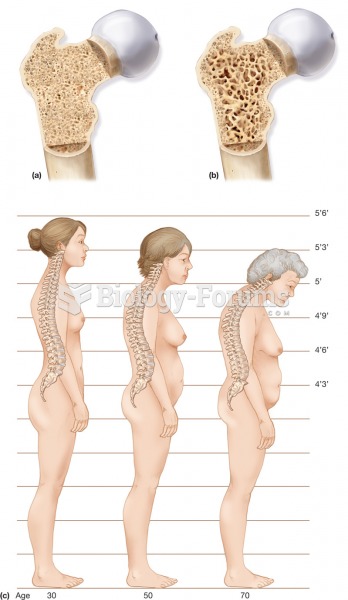|
|
|
In 1885, the Lloyd Manufacturing Company of Albany, New York, promoted and sold "Cocaine Toothache Drops" at 15 cents per bottle! In 1914, the Harrison Narcotic Act brought the sale and distribution of this drug under federal control.
Your heart beats over 36 million times a year.
All adverse reactions are commonly charted in red ink in the patient's record and usually are noted on the front of the chart. Failure to follow correct documentation procedures may result in malpractice lawsuits.
In most cases, kidneys can recover from almost complete loss of function, such as in acute kidney (renal) failure.
Most fungi that pathogenically affect humans live in soil. If a person is not healthy, has an open wound, or is immunocompromised, a fungal infection can be very aggressive.
 Osteoporosis. (a) A section through normal spongy bone. (b) A section through a bone with osteoporos
Osteoporosis. (a) A section through normal spongy bone. (b) A section through a bone with osteoporos
 Space-filling model of an actin filament (shades of red) with one myosin head (gray and two shades o
Space-filling model of an actin filament (shades of red) with one myosin head (gray and two shades o
 The Pleiades, an open cluster of stars in the constellation of Taurus. These stars share a common mo
The Pleiades, an open cluster of stars in the constellation of Taurus. These stars share a common mo




